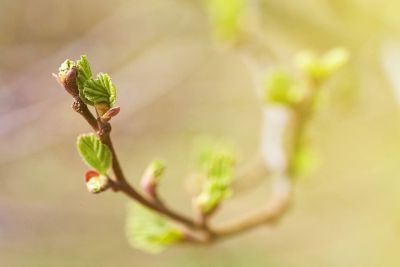Budding fruit trees is the principal method of propagating new fruit trees, but it is frequently used for a variety of woody plants. The technique is extensively used by commercial growers. Although it may seem complicated and mysterious, with a little practice and a lot of patience, budding can be done by home gardeners. As a rule, even beginners have better luck with budding than most other propagation techniques.
Plants and Budding Propagation
Budding basically involves inserting a bud into the rootstock of the other plant. Usually, budding occurs as near the ground as possible, but certain trees (such as willow) are done much higher on the rootstock. It usually takes place where the rootstock grows, with no digging required. Budding propagation is frequently used to:
propagate ornamental trees that are difficult to grow by seeds or other means
create specific plant forms
take advantage of beneficial growth habits of specific rootstocks
improve cross-pollination
repair damaged or injured plants
increase the growth rate
create fruit trees that produce more than one type of fruit
What Plants Can be Used for Budding?
Most woody plants are suitable, but a few of the most common plants and trees that use budding include:
Fruit and Nut Trees
Crabapple
Ornamental Cherries
Apple
Cherry
Plum
Peach
Apricot
Almond
Pear
Kiwi
Mango
Quince
Persimmon
Avocado
Mulberry
Citrus
Buckeye
Grapes (chip budding only)
Hackberry (chip budding only)
Horse Chestnut
Pistachio
Shade/Landscape Trees
Gingko
Elm
Sweetgum
Maple
Locust
Mountain Ash
Linden
Catalpa
Magnolia
Birch
Redbud
Black Gum
Golden Chain
Shrubs
Rhododendrons
Cotoneaster
Flowering Almond
Azalea
Lilac
Hibiscus
Holly
Rose
